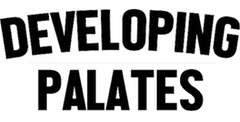
Yesterday, if you read mainstream media reports, you heard of the FDA’s decision to regulate the e-cigarette industry. However, if you are a close follower of the premium cigar industry, you know that the FDA’s Deeming Document on tobacco regulation goes far and beyond e-cigarettes and can hit the premium cigar industry hard. One thing that is a ray of hope is the potential to put premium cigars in a separate category. This proposal was mentioned in the Deeming Document and is being released for public comment.
The FDA refers to two options in terms of what to whether cigars fit into the scope of the proposed regulations. The option for exemption is known as Option 2. The FDA has said in its final ruling it might incorporate items from both options.
At the root of all of this is going to be the debate on what defines a cigar that would fall into this exemption category. This is covered in the Section IV.C in what Deeming Document:
Under Option 2, the proposed rule would extend FDA’s authority to a subset of cigars (defined as “covered cigars”) and to other products meeting the definition of “tobacco product,” except the accessories of such products. In order to define the products that would be subject to this approach, FDA would propose to define a covered cigar to mean: any cigar as defined in this part, except a cigar that:
(1) Is wrapped in whole tobacco leaf;
(2) contains a 100 percent leaf tobacco binder;
(3) contains primarily long filler tobacco;
(4) is made by combining manually the wrapper, filler, and binder;
(5) has no filter, tip, or non-tobacco mouthpiece and is capped by hand;
(6) has a retail price (after any discounts or coupons) of no less than $10 per cigar (adjusted, as necessary, every 2 years, effective July 1st, to account for any increases in the price of tobacco products since the last price adjustment);
(7) does not have a characterizing flavor other than tobacco; and
(8) weighs more than 6 pounds per 1000 units.
Item #6 is of particular concern, and it should very well be – namely the floor of $10.00 per cigar. However, it is important to know that this specific question is one that the FDA is seeking public comment on. This is one of several questions the FDA is seeking public comment on. The Deeming Document Says:
We ask for comments, including supporting facts, research, and other evidence, on the following questions regarding this issue:
- Is this proposed definition of “covered cigar” appropriate to capture those products that, because of how they are used, may have less of a public health impact than other types of cigars?
- Should long filler tobacco content be included as one of required elements of a “premium” cigar (excluded from the definition of a “covered cigar”)? If so, what percentage of the tobacco contained in the cigar should be required to be long filler tobacco in order for the cigar to be considered “premium”?
- Is it appropriate to include the $10 price point in differentiating “premium” cigars from other cigars? Please provide any data or information that supports the selection of a $10 price point or, if you believe a different price point is more appropriate, that supports the selection of that price point.
- Should a volume/rate restriction (e.g., “is produced at a rate of no more than [insert number] units per minute”) be included as one of required elements of a “premium” cigar (excluded from the definition of a “covered cigar”)? If we were to include this restriction, what should the rate be? How would FDA determine compliance with such a restriction?
- Is it appropriate to include the proposed weight restriction (6 pounds per 1000 units) in differentiating “premium” cigars from other cigars?
- Would a different regulatory scheme for covered cigars, as defined here, or other categoryof cigars adequately address the dangers of tobacco use by adults or the proven dangers associated with use of cigars (such as increased risk of several cancers even among those users who do not inhale, and risk associated with lower levels of use as discussed in section VII)?
- How should the fact that studies indicate that young adults likely prefer cigarillos, as opposed to traditional large cigars, affect FDA’s decision about whether to regulate “premium” cigars?
The answers and feedback to many of these questions could very well shape the future of the premium cigar industry in the U.S.







